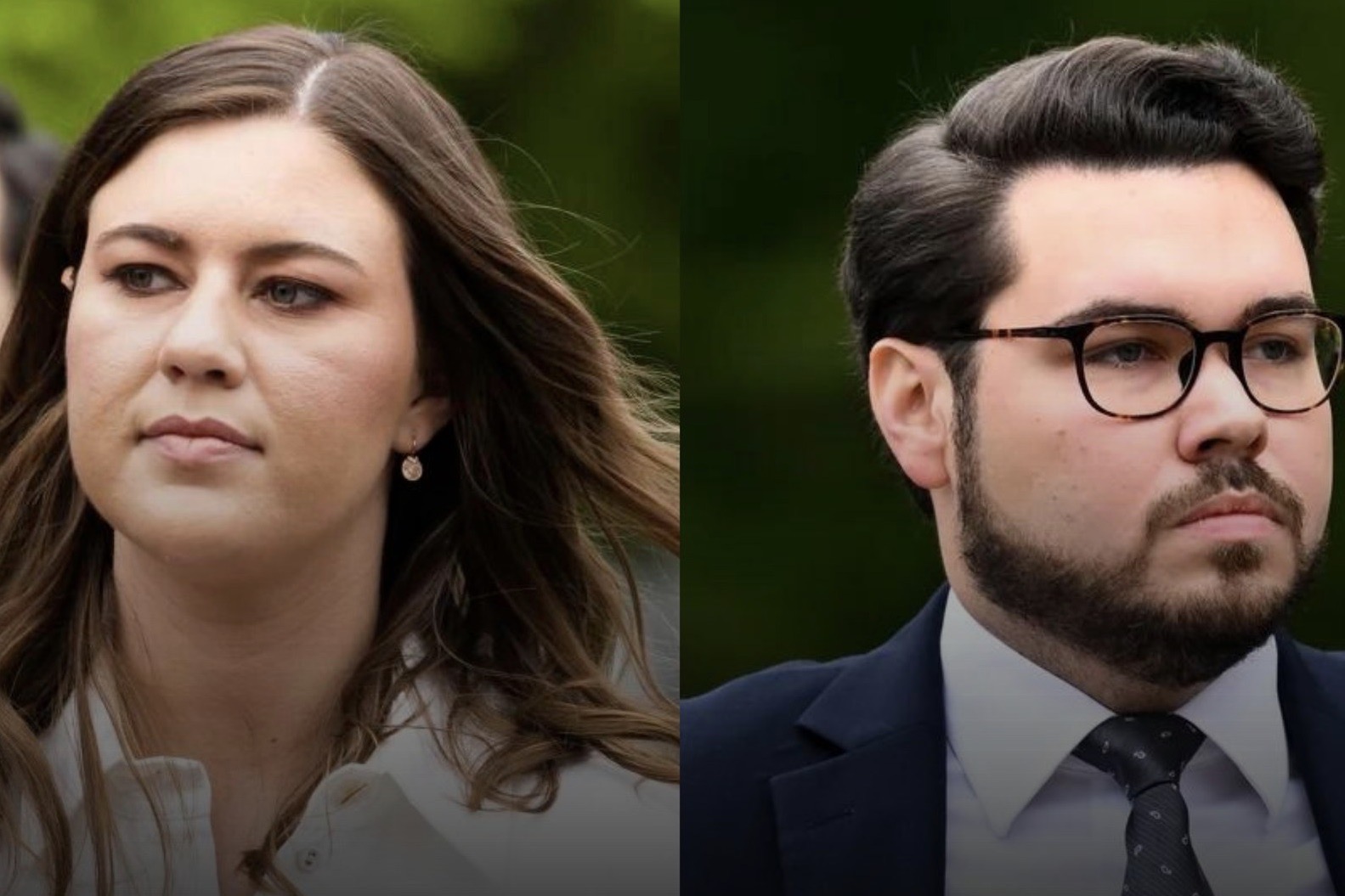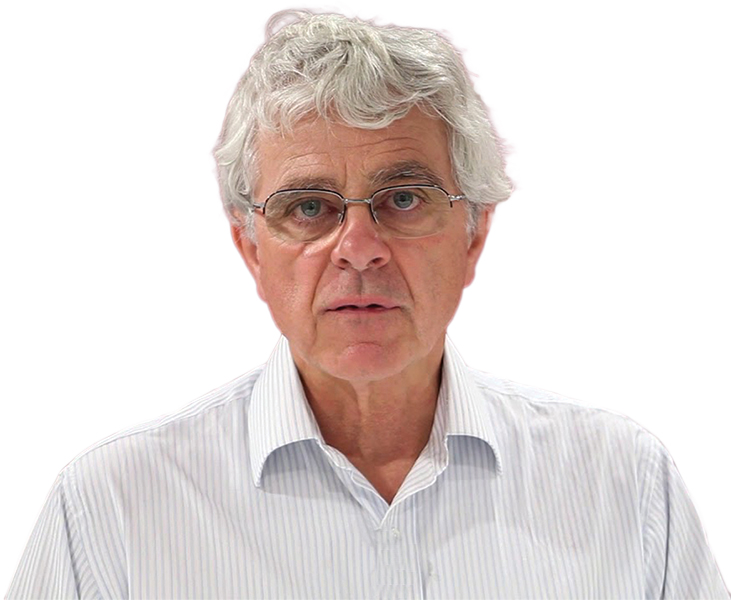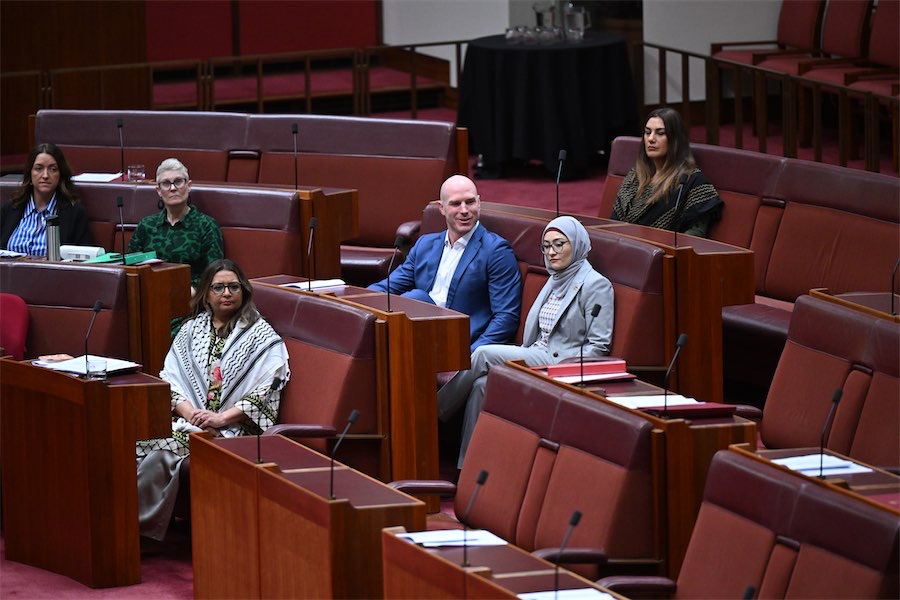
“The police investigators were experienced, but in this case the expectations were way above normal. The sexual-assault allegation is common enough, but everything else about this case was and is out of the ordinary,” writes HUGH SELBY.
THIS week police officers will give evidence to the Sofronoff Inquiry.

No doubt they have all been interviewed by the inquiry investigation team. Counsel assisting (CA) Erin Longbottom KC will have used the interview material to prepare her questions to each of them in the witness box.
The Board of Inquiry, led by Commissioner Walter Sofronoff KC, is looking into how ACT police, prosecutors and a victim support service handled allegations made by Brittany Higgins against her former colleague Bruce Lehrmann.
What follows is background information that will help to understand the reasons for questions (both by the CA and other advocates) and the significance of the answers given by the police witnesses.
The police investigators into the Higgins allegations were experienced. They went about their task aiming to be thorough. That’s what we would expect of them, but in this case the expectations were way above normal. The sexual-assault allegation is common enough, though distressing, but everything else about this case was and is out of the ordinary.
The crime scene
The crime scene was Parliament House, the actors were staffers for a government minister, and the rumour mills in this public-service town ground every piece of gossip into flour for yet another salacious loaf in which the yeast was the media in ferment.
It’s a fundamental part of criminal investigation that every contact leaves a trace. This is known as the Locard principle, after the man who first impressed its importance upon all crime investigators.
Sexual activity, be it consensual or not, leaves lots of trace material on bodies, clothes, beds, even tables. But these traces are lost over time by natural breakdown and subsequent events such as cleaning.
From an investigation perspective, the ideal crime scene has been undisturbed since the claimed event, the time interval between that activity and police inquiry is short, the complainant has washed neither themselves nor any clothing that they were wearing, and there are unedited phone records and text messages that offer support for the complainant’s account.
Canberra has long been served by an excellent, always-open, sexual-assault centre, at the Canberra Hospital, where experienced staff treat distressed complainants with compassion, gather trace evidence for laboratory testing, and give sexual health advice and medication as necessary to deal with possible pregnancy and sexually transmitted disease.
That centre is just minutes from Parliament House. Ms Higgins did not go there, nor did she work with police in a timely manner.
Investigative method
Both in terms of quality and quantity of relevant evidence the police were left with less than the ideal. They knew that because the onus is on the prosecution to prove its case that they would likely get nothing out of the alleged wrongdoer other than, “I did nothing wrong”.
There is no requirement upon a person suspected of a crime to offer anything to police or a court, save in limited instances such as a claim, called an alibi, to have been somewhere else. As it was agreed that both she and he were at Parliament House, and went there together, the entire onus was upon the prosecution using the results of the police work.
During any investigation police will gather information, some of which will guide further inquiries. However, some of that gathered information may not be admissible as evidence in court. This is because they may not be able to confirm the accuracy of the information, or because it proves to be a red herring, or it proves to be wrong.
Investigative information is just that: information. Some of it may not amount to useful evidence for the prosecution of the charge.
A criminal charge has components, with each of these needing to be proved. They are called “elements of the offence”. Police know these “elements” and they must evaluate and allocate the admissible evidence that they collect against those elements.
In an alleged sexual assault, what is the evidence that a sexual act occurred between these people at the place and time claimed? What is the evidence as to it being consensual or non-consensual? If applicable (which depends on the facts as uncovered), what is the evidence that the suspect did not turn their mind to whether the complainant did or did not consent?
Especially when the only evidence is the complainant’s assertions that such and such happened (because no third person or surveillance/sound equipment was present in that place at that time) it is common sense that the police must consider: “Will the complainant be believed?”
The strength of belief in any evidence is the sum of the acceptance of the message and the acceptance of the messenger.
Nowadays, when complainants are interviewed by police, the audio-visual record of that interview becomes the main part of the prosecutor’s presentation of the complainant to the fact finder at a trial. This audio-visual interview is played in court as an early part of the prosecutor’s case. This has advantages to both the parties and the factfinders. Everyone can see not only what the complainant told police but how they said it; that is, their demeanour. The audio-visual record is given to the defendant’s lawyers before the trial.
The second recorded interview
In the investigation of Ms Higgins’ allegations the police called Ms Higgins for a second audio-visual interview. There is no rule against doing so.
To the contrary, when there are allegations of more than one occasion of sexual misconduct, or a number of claimed non-consensual, different sexual acts during one encounter, then it is good practice to conduct more than one interview. This gives the complainant a needed break and better organises the questions so that the later users – lawyers for both sides, jurors and trial judge – can easily follow the questions and answers.
From answers given at the public hearings it seems that the second interview “tested” Ms Higgins, especially with respect to seeming inconsistencies and gaps in what she recalled.
Mr Drumgold SC was critical of the process, likening it to a cross-examination. Such a criticism seems misplaced.
Any complainant who gives evidence at a trial will be cross-examined. Done well such questioning will expose weaknesses in the content of the account given to police and others (such as family or friends) by the complainant, draw attention to why the witness should not be believed on some matters or at all, and point the fact finders toward acquitting the accused because there is a doubt about the strength of the prosecution’s case.
Trials are stressful. No one can appreciate the mix of emotions felt in a witness box until they have experienced it first hand. This is so whether the witness is wholly honest or less so.
Performance in the witness box can be made less stressful, and the witness can be made more effective, by good preparation. However, there are limits on what is allowed.
In Australia, neither police nor lawyers can coach any witness how to answer a question.
For example, suppose the witness has told them that she and the alleged assailant probably walked unsteadily into a room, with him holding her up, because they had both been drinking but she doesn’t remember any other detail.
No one can say to that witness: “When you are asked how you got into the room, you should answer that he grabbed you by the shoulders to hold you up and then pushed you into the room and then stopped and kicked the door shut behind him.”
If Ms Higgins, or any other complainant, is willing to give evidence at a trial then “putting them to the test” before the trial, in an environment where the outcomes are not humiliating, is good practice.
It is better than a trial outcome where the defence advocate reminds the jury of how poorly the complainant performed in the witness box and that they must acquit because there is so much doubt.
There are some who might then say: “But such testing should be done by a lawyer in the prosecuting office, not some police officer’.”
Apart from the implicit denigration and undervaluing of police and their skills, such a comment reveals an ignorance of good investigative technique, namely to assess not just one but all likely hypotheses that can account for the revealed facts.
(Wrongful convictions in this country so often have their origins in a police investigation that became fixated with one hypothesis and ignored all other possibilities.)
To charge or not to charge
There comes a time in the police inquiries when a decision is made to charge or not to charge a suspect. As we heard early in the public hearings, from the DPP Shane Drumgold SC, there appear to be a variety of formulations used by investigating police as to what strength of evidence is required. Whether the differences matter much in practice may become clearer during this week’s hearings.
Because he expressed such low opinions of experienced police investigators (“boofheads”) the DPP seemed unaware of the revolution in recruitment and training of police during the past half century.
Entry requirements, investigative methodology, management skills and interpersonal skills have all improved. He might be unaware of those police investigators who have become prosecutors and judges.
One result of that improved training is that any gap between an experienced police investigator’s assessment of the strength of a case and that of a typical prosecutor will be narrow. This, of course, assumes the proper, objective evaluation by them both.
Defence advocate Steven Whybrow SC recounted how police regard for the DPP was not reciprocated. Tensions between investigating police and prosecution offices are a fact of life. This commonly arises where police want to go to trial but those “seat-warming” prosecutors are adamant that there is not enough to do so. Nevertheless, in most cases there are good reasons for mutual respect.
The Higgins saga has turned the usual upside down. We’ll learn how, why, and with what results – good and bad – this week.
“CityNews” legal commentator and former barrister Hugh Selby is writing running commentary on the Sofronoff Inquiry’s public hearings, focusing upon the advocacy and witness performances. All the “CityNews” coverage of the inquiry, including his daily reviews, are here.
Who can be trusted?
In a world of spin and confusion, there’s never been a more important time to support independent journalism in Canberra.
If you trust our work online and want to enforce the power of independent voices, I invite you to make a small contribution.
Every dollar of support is invested back into our journalism to help keep citynews.com.au strong and free.
Thank you,
Ian Meikle, editor









Leave a Reply